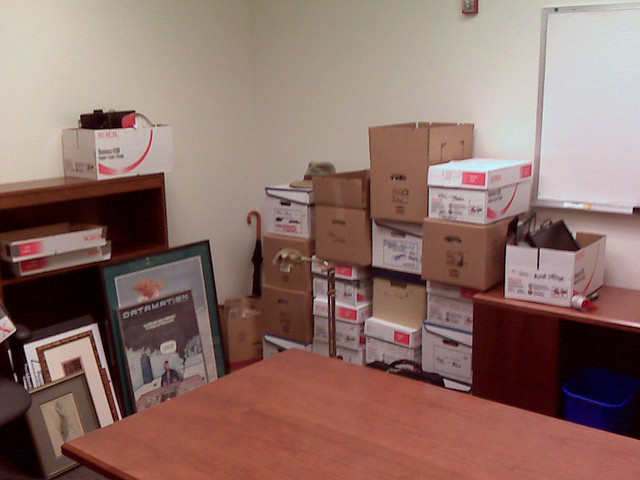How to Store Your Files After Moving Offices

A well organised information and record keeping system will make your company cost-efficient. It can also help reclaim misused office space. Some businesses consider a storeroom as the dumping ground for scrap paper and documents, but the end result is sure to be an unsightly, disorganised mess. As a business grows and staff numbers increase, it’s not uncommon for records storage and retrieval to be wrongly delegated or overlooked altogether. A cramped office can result in unwieldy spaces, irritable staff, and ever increasing clutter. It’s time to get smart regarding record keeping and optimising office space for improved efficiency.
There has to be a better way than dumping scrap paper into a kitchenette or store room. Time management experts estimate the cost of tracking down misplaced documents is around $120, and re-creating a document will cost about $250 of company money. On average, businesses lose $14,000 per year due to poorly organised data. In order to mitigate or avoid expense is important to create an information and records plan, including archiving, storage, and shredding. Here are some tips:
Create responsibilities: One way to ensure the success of a project is to assign roles. It’s well known that much more gets done when people are accountable for the end result. At the very beginning, assign roles and make it abundantly clear who is responsible for maintaining records. At this point you can also determine what needs archiving, and what files have reached the end of their useful lives and can be destroyed.
Organise a workflow: Once you have delegated responsibilities regarding keeping a records system, a workflow will maintain it and keep a sense of organisation. Create a system for filing new records, and include a timeline for boxing up older files for archiving off-site, as well as erasing and shredding obsolete materials. Keeping a calendar will assist in sticking to your archiving and filing plan. And be consistent and clear about how and where each type of file will be stored.
It’s time for spring cleaning: Some materials will be saved on-site, some off-site, and some destroyed. The first step is to get rid of all non-essential records by shredding or moving off-site to a secure facility. Once the excess is gone it is time to do a separation of day-to-day records from rarely needed records. Day-to-day items are best stored in-house. In fact, all other records can usually be stored in an off-site archiving facility. You will be amazed how much more attractive and productive your office is becoming, with employees focusing on core business tasks instead of wading through unnecessary paperwork.
Keep the momentum: Once your office space is organised, it’s important to keep up the good work. New employees should be educated about company policies for information management systems. Staff should also firmly understand the cost to your company bottom line if procedures are not followed. With records properly organised, you will realise how difficult it is to lose a suitably filed document. Office space can now be put to use doing what it supposed to: turning a profit. An intelligent information management plan is certain to create a more productive, cohesive, and pleasant workplace.
By George B (follow me on Google)
